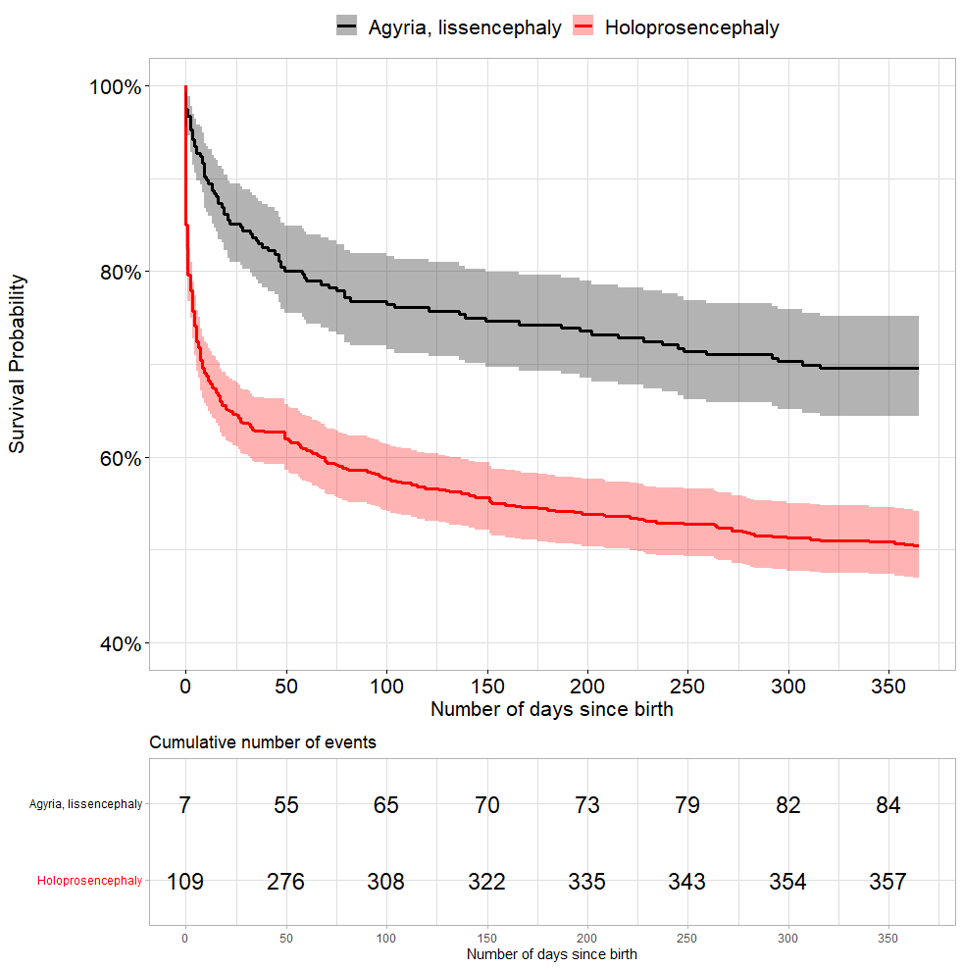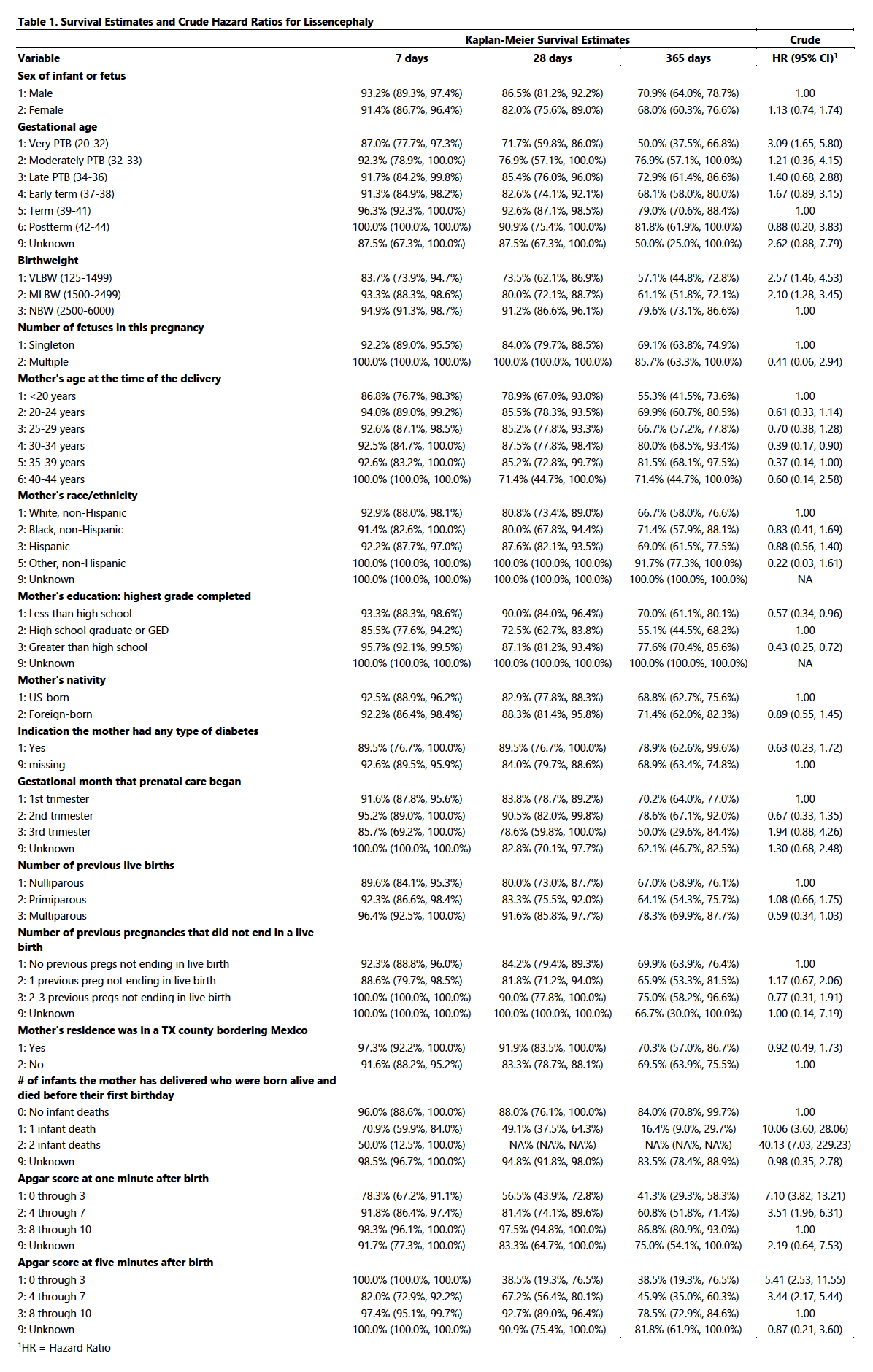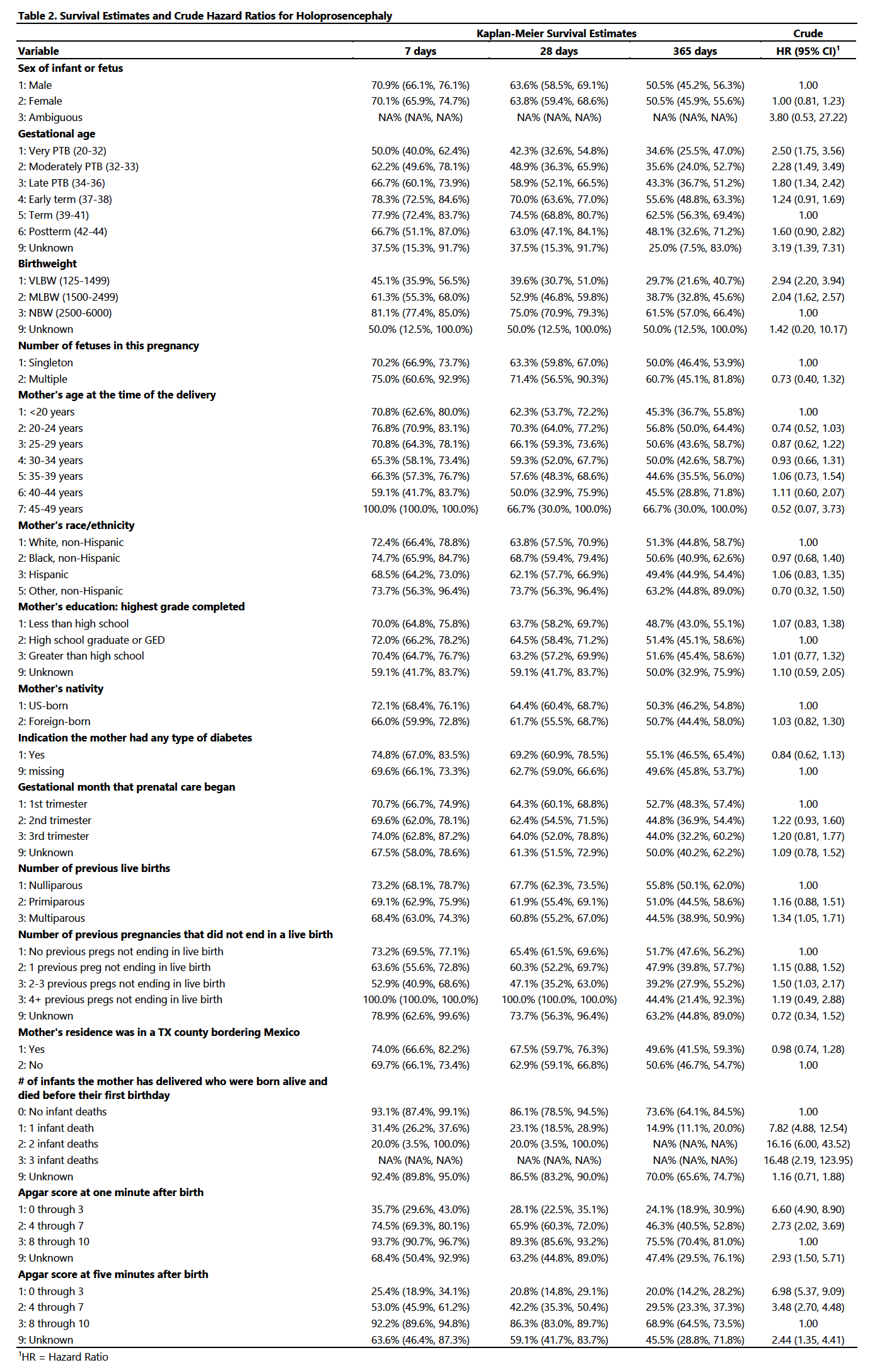Neonatology
Session: Neonatal Neurology 6: Clinical
562 - Mortality of lissencephaly and holoprosencephaly in the first year of life among Texas infants.
Saturday, May 4, 2024
3:30 PM - 6:00 PM ET
Poster Number: 562
Publication Number: 562.1613
Publication Number: 562.1613
- SA
Samiya F. Ahmad, MD (she/her/hers)
Associate Professor of Pediatrics
Baylor College of Medicine
Houston, Texas, United States
Presenting Author(s)
Background: Holoprosencephaly (HPC) and lissencephaly (LS) are major but rare birth defects of the central nervous system. Little data is available regarding the mortality associated with these conditions and what epidemiological factors are associated with increased risk of mortality.
Objective: We sought to describe the mortality trends over the first year after birth in a large cohort of infants with either HPC or LS. We further sought to describe epidemiological and clinical factors associated with increased rates of infant mortality.
Design/Methods: The Texas Birth Defects Registry (TBDR) conducts active surveillance of birth defects among offspring of mothers who are Texas residents at the time of delivery. We utilized the TBDR to first identify live-born cases of HPC and LS between 1999 and 2015. Sociodemographic characteristics, pregnancy factors, and outcomes information of birth defect cases, including first-year survival, are extracted from a combination of birth certificates and medical records. Descriptive statistics and Kaplan-Meier survival estimates were used to characterize first-year survival by defect and across sociodemographic and clinical characteristics. Cox proportional hazards models was used to calculate crude hazard ratios (HR) and 95% confidence intervals (95% CI).
Results: Of 6,670,041 Texas live births during the study period, we identified 280 with LS and 995 with HPC, which corresponds to rates per 10,000 live births of 4.2 and 14.9, respectively. For LS, Kaplan-Meier survival estimates at 7, 28, and 365 days were 92.4% (89.3%, 95.6%), 84.4% (80.2%, 88.8%), and 69.6% (64.3%, 75.2%), respectively. Survival estimates for HPC were lower at 7, 28, and 365 days at 70.4% (67.1%, 73.8%), 63.6% (60.2%, 67.2%). Only half of infants with HPC survived to their first birthday (Figure 1).
Multiple factors affected the crude mortality HR for these conditions. For LS, factors increasing mortality included very preterm birth, low birthweight, low Apgar scores and prior infant death (Table 1). For infants with HPC, any degree of prematurity had association with increased crude HR in the first year of life, as well as low birth weight, and low Apgar scores (Table 2).
Conclusion(s): Both LS and HPC are associated with high mortality rates in infancy. Low birthweight and prematurity significantly increase the mortality rates of these conditions. Further investigation is required to determine those clinical factors associated with increased mortality risk and those factors associated with early versus late death.



